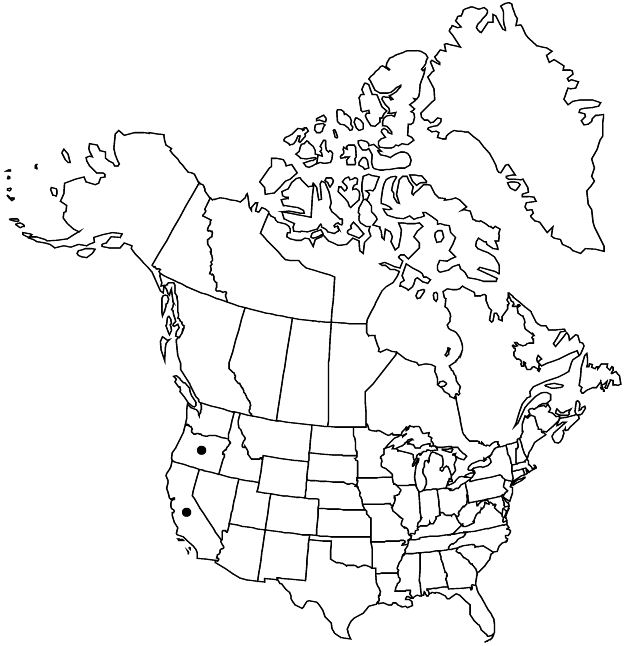Sidalcea malviflora
Smithsonian Contr. Knowl. 3(5): 16. 1852.
Herbs, perennial, colonial or not, 0.2–0.6 (–1.1) m, not glaucous, with woody caudex, usually with woody taproot, without rhizomes or rhizomes not cordlike, 3–10 mm diam. Stems clustered or scattered, erect to ascending, or decumbent to suberect, sometimes rooting, unbranched or branched, solid, usually densely to sparsely hirsute, stellate-hairy, or glabrescent, hairs 1–2 mm, distal stem usually more sparsely hairy to glabrate. Leaves basal and/or cauline; stipules green or purplish, linearlanceolate or wide-lanceolate to oblong or ovate, 3–8 (–12) × 1–3.5 (–5) mm, often hairy to ciliate; petioles of proximalmost leaves (5–) 6–15 (–30) cm, 3–9 times as long as blades, much reduced distally to 1/2–2 times as long as blade; blades: proximalmost usually orbiculate, sometimes reniform, unlobed or shallowly lobed, (1–) 4–15 × (1–) 4–12 cm, base cordate, margins crenate, apex rounded, surfaces hairy, hairs stiff, either or both simple and stellate or forked, lobes cuneate-obovate, margins dentate; mid-stem unlobed or palmately 5–9-lobed, margins coarsely crenate-serrate, lobes toothed or lobed to dissected; distalmost smaller, sometimes subsessile. Inflorescences erect or somewhat ascending, dense, subcapitate or spicate especially when young to elongated and open, calyces overlapping or not, not long-pedunculate, usually unbranched, 2–21-flowered, usually light or bright pink to lavender or dark rose-purple, rarely white, pale-veined, 7–20 (–30) mm, pistillate 7–11 (–30) mm, bisexual 10–25 (–30) mm; staminal column 4–8 mm, hairy; anthers white to pale-pink or pale-yellow; stigmas (6 or) 7 or 8 (or 9). Schizocarps 4–8 mm diam.; mericarps (6 or) 7 or 8 (or 9), 2.5–4 mm, usually minutely hirtellous, stellate-puberulent, or glandular, rarely glabrous, roughened, sides ± honeycomb-pitted and reticulate-veined, back less so, mucro 0.3–1 mm. Seeds 1.5–3 mm. 2n = 20, 40, 60.
Distribution

Calif., Oreg.
Discussion
Sidalcea malviflora includes local variants and intermediates. It was first described as a coastal taxon; later researchers subsequently included interior populations that shared a few characteristics. Molecular study has shown that the majority of the interior plants are not very closely related to the coastal forms; the species is again considered to be primarily coastal. Two inland taxa remain, subspp. californica and dolosa.
Sidalcea malviflora can generally be distinguished by its coastal distribution, its decumbent-based stems, its relatively short pedicels, its relatively large and showy petals that usually have conspicuous whitish veins, especially when dry, and its generally prominently reticulate-pitted and usually glandular-puberulent mericarps that have a mucro. The leaves can be extremely variable, from unlobed to highly dissected; the indument tends to be harsh to the touch.
Subspecies 7 (7 in the flora).
Selected References
None.
Lower Taxa
Key
| 1 | Inflorescences usually dense, flowers obviously overlapping, fruits either congested or spaced and not overlapping on elongated axis | > 2 |
| 1 | Inflorescences usually open, elongate, flowers not obviously overlapping except in bud, axis elongated in flower, fruit not congested | > 3 |
| 2 | Rhizomes freely rooting; leaves at midstem usually lobed; stems softly bristly-hairy proximally, stellate-hairy distally, usually not densely. | Sidalcea malviflora subsp. patula |
| 2 | Rhizomes not freely rooting; leaves at midstem unlobed; stems densely, softly bristly-hairy or stellate-hairy. | Sidalcea malviflora subsp. rostrata |
| 3 | Leaves: blades, except proximalmost, deeply lobed, lobes ternate or dissected, segments linear (Geranium-like); stem base usually decumbent, often rooting. | Sidalcea malviflora subsp. laciniata |
| 5 | Leaf blades: basal 1–2(–2.5) cm wide; calyces and stipules purplish; stems glabrous, short stellate-hairy, or sparsely bristly. | Sidalcea malviflora subsp. purpurea |
| 5 | Leaf blades: basal 2–6 cm wide; calyces and stipules usually green, not purple tinted (except sometimes at base of stipule only); stems softly bristly-hairy or stellate-hairy. | Sidalcea malviflora subsp. rostrata |
| 6 | Stem base hairy, hairs simple, soft, 2 mm; mericarps slightly reticulate-veined, wrinkled; rhizomes usually 10+ cm, freely rooting, sometimes matted; calyces sparsely stellate-puberulent and hirsute-bristly; San Bernardino Mountains. | Sidalcea malviflora subsp. dolosa |
| 6 | Stem base hairy, hairs stellate and/or simple, to 2 mm; mericarps strongly reticulate-veined, wrinkled or pitted; rhizomes usually to 10 cm, not freely rooting, not matted; calyces usually densely simple- or stellate-hairy; s outer South Coast and w Transverse ranges from Monterey to Los Angeles counties | > 7 |
| 7 | Stems usually stellate-hairy and/or spreading-bristly to glabrate; calyces densely stellate-puberulent and coarsely bristly; petals: bisexual 15–29 mm; coastal and insular. | Sidalcea malviflora subsp. malviflora |
| 7 | Stems densely, softly velvety stellate-hairy, hairs 1 mm; calyces densely stellate-puberulent; petals: bisexual 10–30 mm; inland. | Sidalcea malviflora subsp. californica |
"elongated" is not a number.